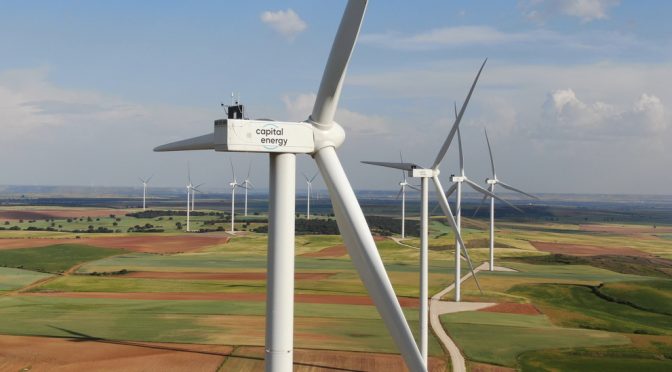The Regional Government’s Department of Industry, Tourism, Innovation, Transport and Commerce submits both renewable facilities to public information
Its start-up and that of its associated electricity evacuation infrastructures, located in the municipalities of San Miguel de Aguayo, Molledo, San Pedro del Romeral, Luena and Arenas de Iguña, will involve an investment of about 95 million euros
Alsa and Bustafrades will have a combined installed power of 69.5 MW and will be able to supply clean energy to almost 60,000 Cantabrian homes, avoiding the emission into the atmosphere of about 44,000 tons of CO2 per year
Its construction will mean the creation of about 390 jobs and will have an annual economic impact on local coffers, as well as through leasing contracts, of around 285,000 euros.Santander, September 1, 2021.- Capital Energy, a Spanish energy company born in 2002 and whose vocation is to become the first 100% vertically integrated renewable operator on the Iberian Peninsula, continues to consolidate its renewable energy project in Cantabria.
The General Directorate of Industry, Energy and Mines of the Regional Government’s Ministry of Industry, Tourism, Innovation, Transport and Commerce has released the authorization requests [1] of two new wind farms, Alsa and Bustafrades, to public information. March will involve an investment of close to 95 million euros. These renewable facilities will be located in the municipalities of San Miguel de Aguayo, Campoo de Yuso, Molledo, San Pedro del Romeral, Luena and Arenas de Iguña and will have a combined installed power of 69.5 megawatts (MW).
Thanks to their 15 wind turbines, Alsa and Bustafrades will be able to produce about 184,600 megawatt hours (MWh) of clean electricity per year, enough to satisfy the consumption of around 60,000 Cantabrian homes, and will avoid the annual emission into the atmosphere of more than 43,000 tons of CO2.
The construction of these two parks and their associated electricity evacuation infrastructures will lead to the creation of about 390 jobs during peak periods. In addition, Capital Energy will provide permanent employment to about 14 professionals in the area in the operation and maintenance phase.
Likewise, these facilities will have an annual economic impact on local coffers (IBI and IAE), as well as through leasing contracts, of around 285,000 euros. To this recurring amount is added the punctual payment of the ICIO, which will exceed 1.5 million.
Bustafrades wind farm:It will be located in the towns of San Pedro del Romeral, Luena, Arenas de Iguña and Molledo and its construction will involve an investment of more than 62 million euros. Its 11 wind turbines, with a unit power of 4.5 MW, combine a capacity of 49.5 MW and will be capable of producing more than 141,600 MWh, equivalent to the electricity consumption of nearly 45,000 homes. This park will prevent the emission into the atmosphere of about 30,000 tons of CO2 per year.
Alsa wind farm:Located in the municipalities of San Miguel de Aguayo, Campoo de Yuso and Molledo, its construction will involve an investment of almost 33 million euros. It consists of four 5 MW wind turbines, for a total installed power of 20 MW, which will be able to generate almost 43,000 MWh. With this production, it will be able to supply clean electricity to some 15,000 homes, avoiding the emission into the atmosphere of more than 13,000 tons of CO2 annually.
Commitment to the socio-economic and sustainable growth of Cantabria
Cantabria is a key community in Capital Energy’s clean energy project. Not surprisingly, the company has 17 renewable projects in the community, all of them wind power and that add up to a combined installed power of close to 690 MW. The start-up of this entire portfolio could involve a global investment of approximately 552 million euros, as well as the creation of some 3,900 jobs in the construction phase and almost 130 permanent jobs in the operation and maintenance phase.
The locations of the projects, in 28 municipalities, have been selected after conducting a multi-criteria analysis of all the variables involved (environmental, technical, urban, patrimonial, social, etc.) and after conducting an extensive bibliographic review of all the legislation and regulations.


